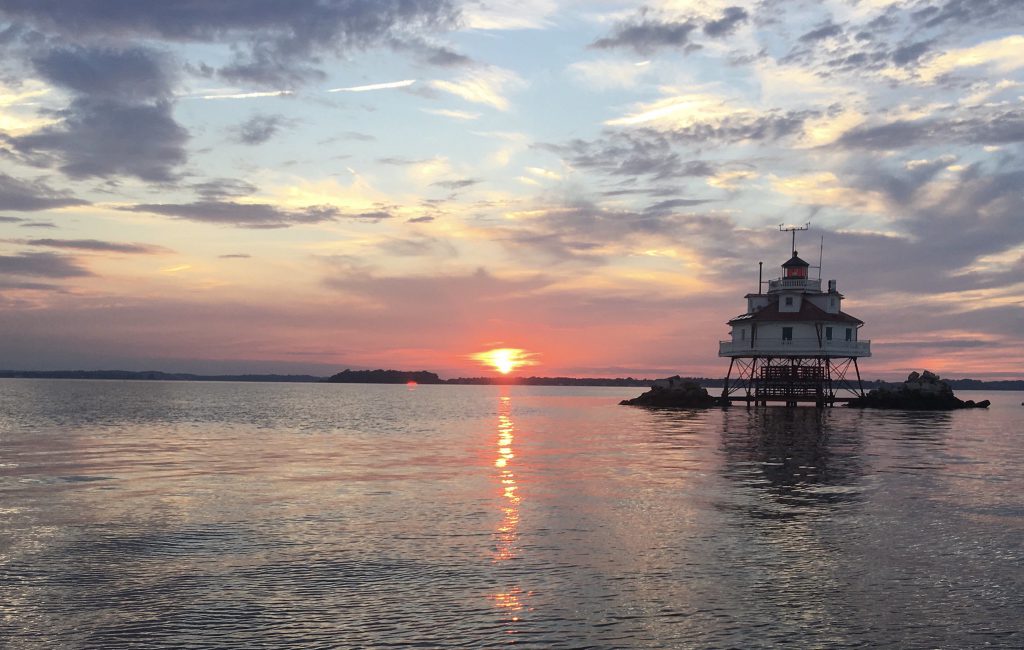Restoring a Treasure: Maryland Makes Progress on Chesapeake Goals
The Chesapeake Bay, the nation’s largest estuary, has been at the core of Maryland’s culture and economy since the dawn of history. Unfortunately, by the 1960s it became apparent that the health of our bay had fallen on difficult times. At first, there was little agreement on what the problems were, and much disagreement on what to do about them. But as science was brought to bear on the issue, it became clear that the primary problem was far too many nutrients and sediment running off of the land and into our waterways as a result of a growing and impactful human population. Still, how to solve the problem remained far less clear.
We now have more than 50 years of science, debate, politics, and bureaucracy between when we first identified the problem and where we are today at solving it. In 2010, the U.S. Environmental Protection Agency (EPA), working in collaboration with Maryland, our sister jurisdictions comprising the Chesapeake Bay watershed (Virginia, Pennsylvania, District of Columbia, Delaware, West Virginia, and New York), and a lot of scientists and interested stakeholders, established a standard of bay health—Chesapeake Bay Total Maximum Daily Load, or TMDL. This is the maximum amount of nitrogen, phosphorus, and sediment that can enter the bay without substantially and negatively impacting the quality of our waters and living resources. The EPA then divided that bay-wide TMDL up among the seven watershed jurisdictions and mandated—through the authority granted in the Clean Water Act—that each jurisdiction implement best management practices for reducing pollution to meet each individual TMDL no later than 2025.
The good news is that we are making progress. Maryland’s TMDL requires that we reduce the amount of nitrogen entering the Chesapeake Bay from Maryland by about 21% from 2010 levels. Maryland is now about halfway to its 2025 goals. That progress is particularly significant when you recognize that today we have about 50% more people living in the Chesapeake Bay watershed than we did in the 1970s. So despite significantly more people creating significantly more waste, we have reduced the amount of its impact. That is a major accomplishment of which we should all be proud!
We still have a substantial way to go, and not a lot of time to get there, but we have a plan and we are following it. To provide reasonable assurance that the TMDL will be met, the EPA has required that each bay jurisdiction develop Watershed Implementation Plans that detail the actions each will take to meet its TMDL. The first iteration of these plans—known as WIPs—were required and submitted to the EPA by each state in 2010. The WIPs have been updated twice since then based on updates in our scientific understanding and lessons learned as we progressed. In August 2019, Maryland submitted our most recent version (known as the Phase III WIP) and we are now beginning the process of implementing those strategies.
Sharing the Load
But simply reducing the amount of nitrogen, phosphorus, and sediment entering the bay by 2025 is not enough. We all know that achieving, maintaining, and enjoying a healthy bay involves far more than just planting cover crops and upgrading wastewater treatment plants.
In recognition of that fact, in 2014 all seven watershed jurisdictions, the federal government, and the Chesapeake Bay Commission signed the Chesapeake Bay Watershed Agreement, which commits the signatories to achieving 31 varied and critical bay restoration outcomes beyond meeting the TMDL by 2025. These Watershed Agreement outcomes include sustainably managing our fisheries, maintaining vital habitats (wetlands, forests, streams, fish passage), reducing the impacts of toxic contaminants, restoring and conserving healthy watersheds, promoting citizen and local government stewardship, increasing public access to the bay, supporting environmental literacy and education, and addressing the impacts of climate change.
Finally, we have also recognized that, even after meeting all our bay restoration goals, our population will likely continue to grow—meaning that our efforts to offset the impacts of that growth will continue far beyond 2025.
These goals are challenging, but not impossible. Central to success will be using the best science available to maximize and continually improve the cost effectiveness of Maryland’s three primary Chesapeake Bay restoration funding programs: the Chesapeake and Atlantic Coastal Bays Trust Fund, the Bay Restoration Fund, and the Maryland Agricultural Water Quality Cost Share Program. Leveraging these fund sources with other state programs like Program Open Space, federal programs, local funds, and the private sector is essential. Maryland has a strong tradition of remaining grounded in sound science while pushing the envelope on innovative policies and initiatives.
Maryland has been a leader in the Chesapeake Bay Program Partnership since its inception. Governor Hogan and his Chesapeake Bay Cabinet have embraced that leadership role, and are committed to the science and innovation that have carried us thus far and that will ensure the successful realization of our goal. The Department of Natural Resources remains central to this success through our world-renowned water quality and living resource monitoring and assessment programs, our innovative and cutting-edge management of the Chesapeake and Atlantic Coastal Bay Trust Fund, sustainable management of our fisheries, our Program Open Space, and a range of programs involving environmental literacy, climate resiliency, public access, fish passage, forestry, wildlife, communication, and legislative work.
DNR has contributed and continues to contribute greatly to Maryland’s and the greater bay watershed’s efforts to realize a healthy and vibrant Chesapeake Bay. We continue to be guided by science—it may not always tell us what we want to hear, but it always shows us the path to success. We have come far and our challenges ahead are significant, but if we remain committed, we are well positioned to achieve our goal.
David M. Goshorn, Ph.D. is the Senior Bay Restoration Coordinator for the Maryland Department of Natural Resources. Appears in Vol. 23, No. 1 of the Maryland Natural Resource magazine, spring 2020.


 1-888-373-7888
1-888-373-7888 233733
233733